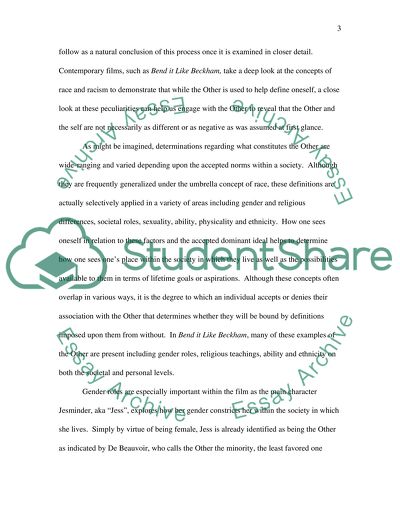Cite this document
(Cinema and Otherness: Bend it Like Beckham Case Study, n.d.)
Cinema and Otherness: Bend it Like Beckham Case Study. Retrieved from https://studentshare.org/visual-arts-film-studies/1550904-race-and-racism-in-modern-culture
Cinema and Otherness: Bend it Like Beckham Case Study. Retrieved from https://studentshare.org/visual-arts-film-studies/1550904-race-and-racism-in-modern-culture
(Cinema and Otherness: Bend It Like Beckham Case Study)
Cinema and Otherness: Bend It Like Beckham Case Study. https://studentshare.org/visual-arts-film-studies/1550904-race-and-racism-in-modern-culture.
Cinema and Otherness: Bend It Like Beckham Case Study. https://studentshare.org/visual-arts-film-studies/1550904-race-and-racism-in-modern-culture.
“Cinema and Otherness: Bend It Like Beckham Case Study”. https://studentshare.org/visual-arts-film-studies/1550904-race-and-racism-in-modern-culture.


